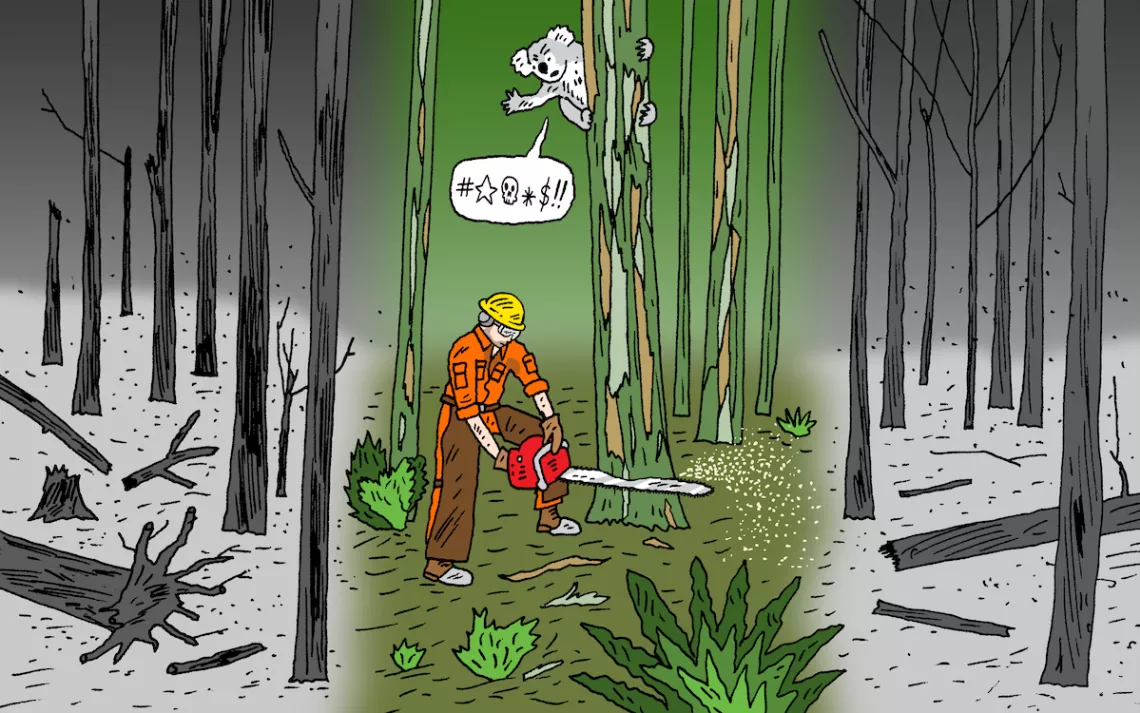ICYMI: Koala Calamity, Pandemic Gravity, Rhino Rebound & More
A weekly roundup for busy people

Illustration by Peter Arkle
Logging continues in unburned koala habitat in New South Wales, Australia.
The novel coronavirus pandemic continues. As of March 20 at :18 A.M. ET, 11,723 people in the United States had tested positive, with 160 deaths. Worldwide, there have been nearly a quarter of a million cases and 10,000 deaths. Many countries have closed their borders, the economies of the major industrial nations are at a standstill, and millions of people are under "shelter in place" orders.
Toilet-paper shortages brought about by hoarders are leading people to use nonflushable materials, resulting in spills of raw sewage.
The National Park Service suspends collecting entrance fees.
The Saudi-Russian oil-price war combined with decreased demand because of the coronavirus pandemic produces the largest oil glut ever. The price of oil plunges another 24 percent to below $21 a barrel, lower than it has been since 2002.
In 2019, solar accounted for 40 percent of new electrical generating capacity in the US.
Much of the Southeast is experiencing its earliest spring leaf-out ever. Nationwide, leaf-out is now three to four weeks earlier than the long-term average.
Greenland is losing 283 gigatons of ice a year.
The climate-denier Heartland Institute think tank lays off nearly a dozen staffers in a financial crisis. Days later, the institute's president, Frank Lasée, is ousted.
In 2019, 53 workers in the solid waste industry in the US and Canada were killed on the job.
This winter, after a good showing in 2018–19, the number of monarch butterflies wintering in Mexico is down by more than half.
The numbers of critically endangered black rhinos are rebounding.
Introducing herds of reindeer, horses, and bison to far northern latitudes could slow the melting of permafrost.
Voles living in a ski area in Norway were found to have six times as many PFAS chemicals in their livers as voles living elsewhere. (Many ski waxes contain PFAS.)
A 40-foot-wide circular structure made from the bones of more than 60 woolly mammoths is discovered in Russia. Its purpose is unknown.
 The Magazine of The Sierra Club
The Magazine of The Sierra Club



